
|
We round one last corner, before entering the
Frozen Niagara area. This is the most spectacular part of the cave, and
comes the closest to being the stereotypical view of the world underground.
|

|
This portion of Mammoth, is a wet cave,
which is why it contains so many spectacular formations. It is out from under
the rock shield overhang.
|

|
Droplets of water can be seen coming down from
the ceiling. They have cut a huge depression in the middle of this chamber.
|

|
Most visitors chose to journey down the staircase,
leading to the bottom of the Frozen Niagara. This marvelous example of flowstone
is one of the most spectacular formations of this, or any other, cave.
|

|
Visitors wait, at the top of the steps. The
view below is otherworldly.
|
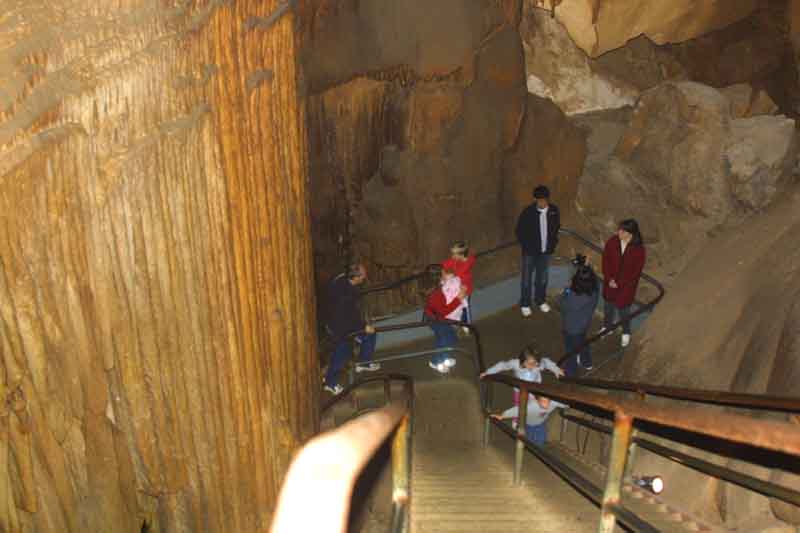
|
Looking down the stairs, towards the landing,
where the steps turn sharply to the left.
|
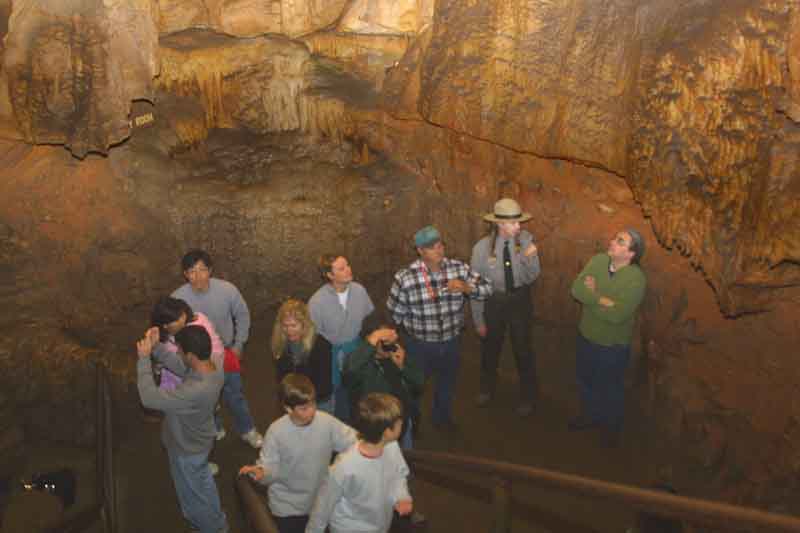
|
A look down, from the landing. Note that all
eyes are looking up. Most of the view, from down here, is above.
|

|
A look up, towards the landing, from the bottom.
Flowstone, draperies, and columns dominate the view from the bottom.
|
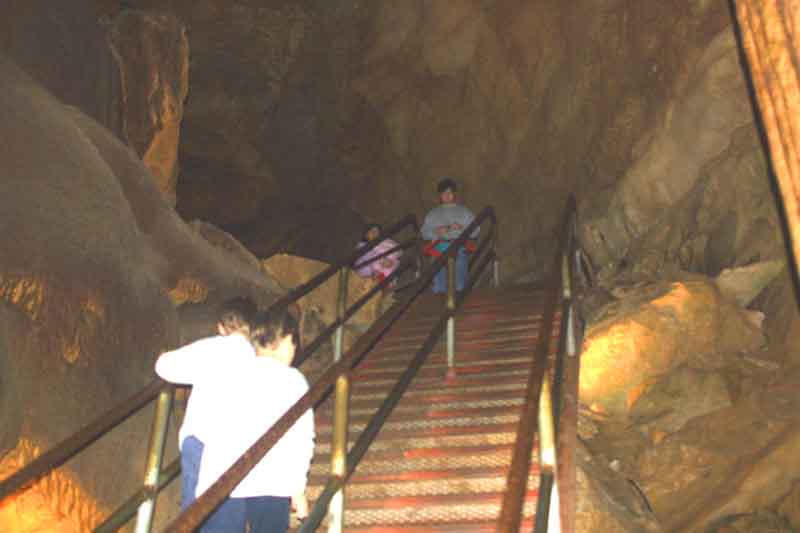
|
A look up the main stairs, at visitors making
up their minds to come down. They don't know what they are missing, as not
all formations may be seen from the top.
|
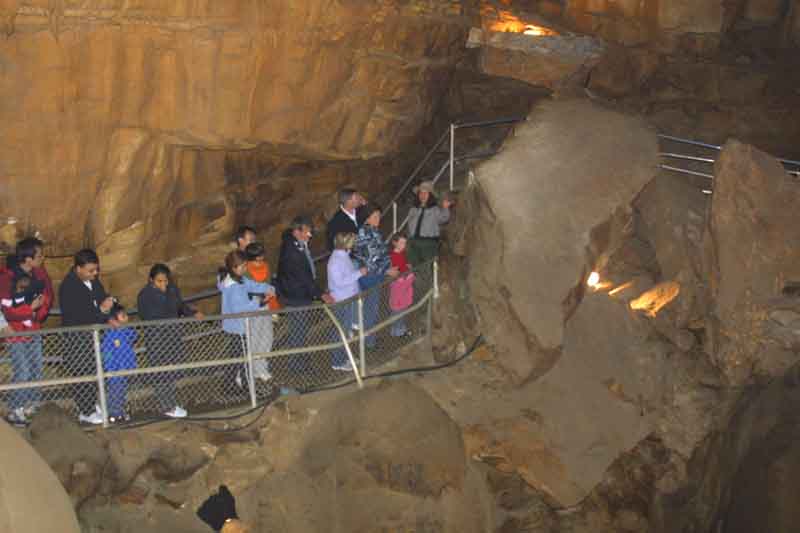
|
The group stops, on a path winding around the
large shaft in the center of the chamber. The guide here advises that
there will be 98 steps, for those who wish to visit the bottom.
|

|
Looking a bit like an usher at a movie theater,
our ranger guide stand at the top of the stairs, waiting for the group to
catch up. Some of us will go down the stairs, while other will stay at the
top, not wanting to venture down.
|

|
The stairs to the bottom, flanking the Frozen
Niagara formation. This is the centerpiece, and the most impressive single
formation in the park.
|
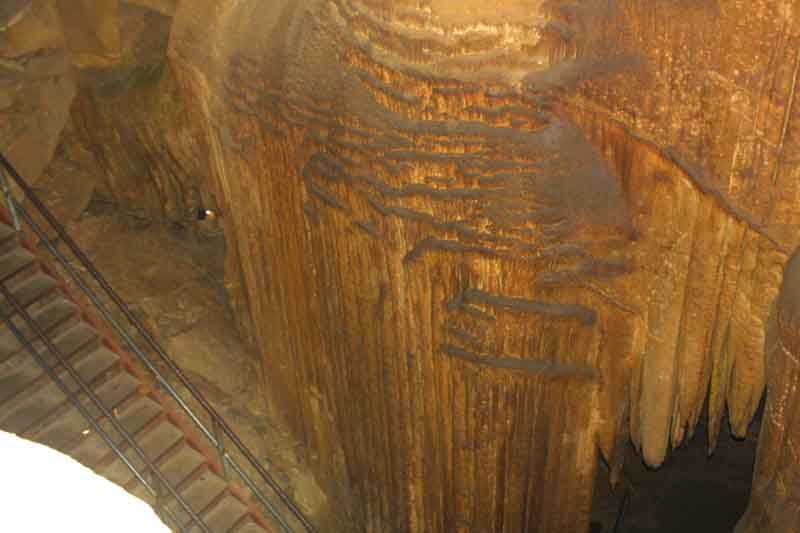
|
Yet another shot, of the Frozen Niagara, this
time from nearly straight above. Parts of the formation seem to glow under
the light, and may very well either be wet, or crystallized, to act as small
reflectors.
|
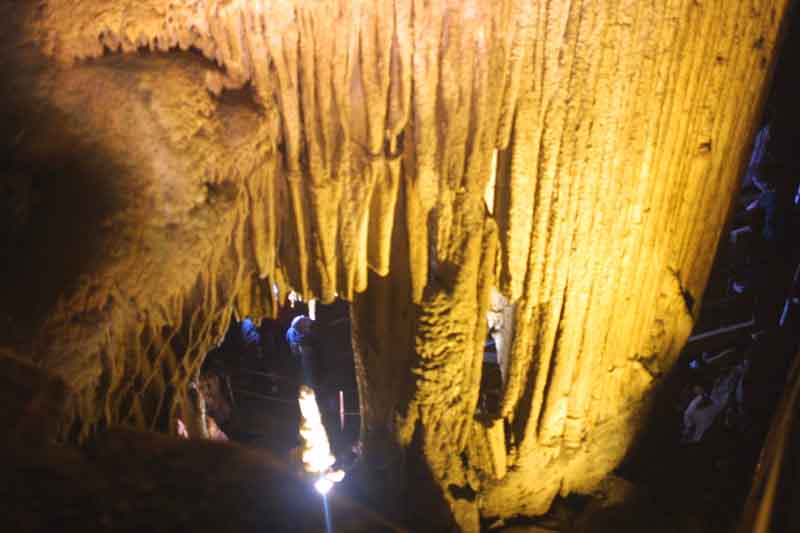
|
A look through a "window" in the Frozen Niagara,
to the visitors gathered below. The photo was taken about half way down the
stairs.
|

|
A photograph of the ceiling, which appears to
be entirely constructed of flowstone, and stalactites.
|

|
Visitors gawk, crane their necks upwards, and
photograph. I am not making fun here, as I was doing the exact same thing.
|
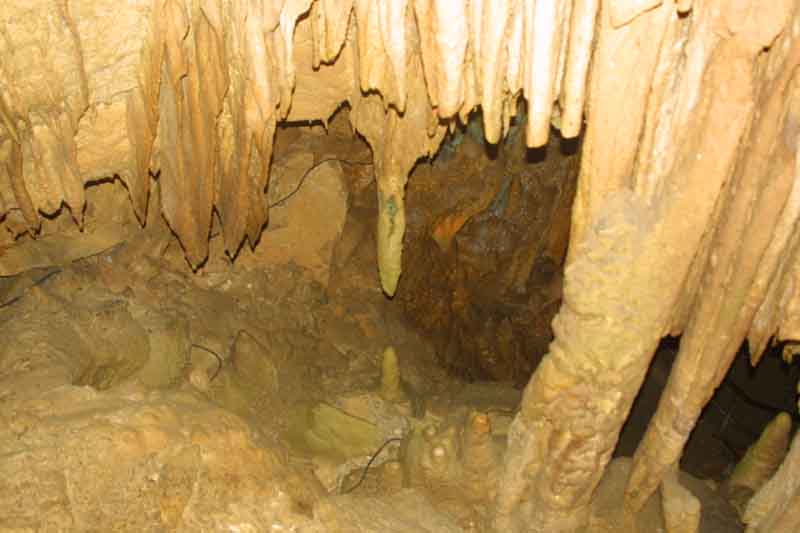
|
A look down, in to the lower chambers, from
above. The flowstone has nearly created a solid wall here; but there are
still some open spaces.
|
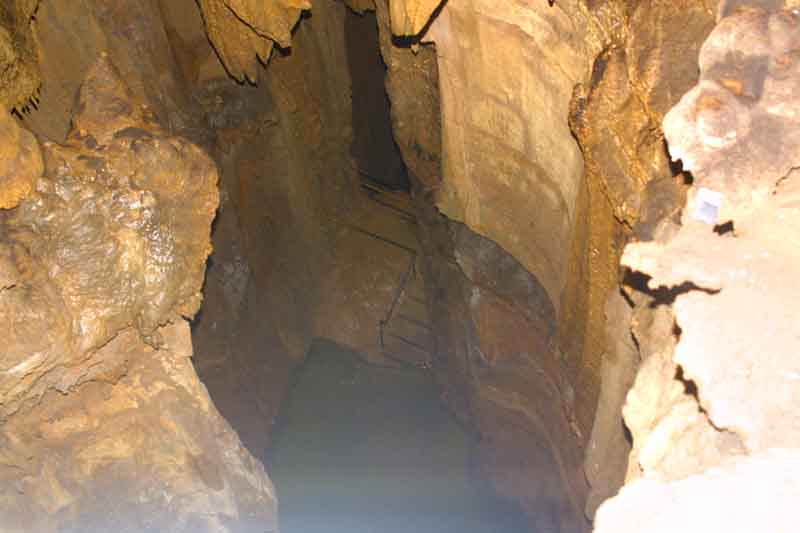
|
This is the start of the underground river.
Note the stairs carved into the landing. Boat trips had formerly originated
here; but are no longer offered.
|

|
On the way out, we pass through a series of
highly decorated chambers, and tunnels. The parts of the cave, which are
not under the protective rock shield, have a completely different character
than the rest of the system.
|
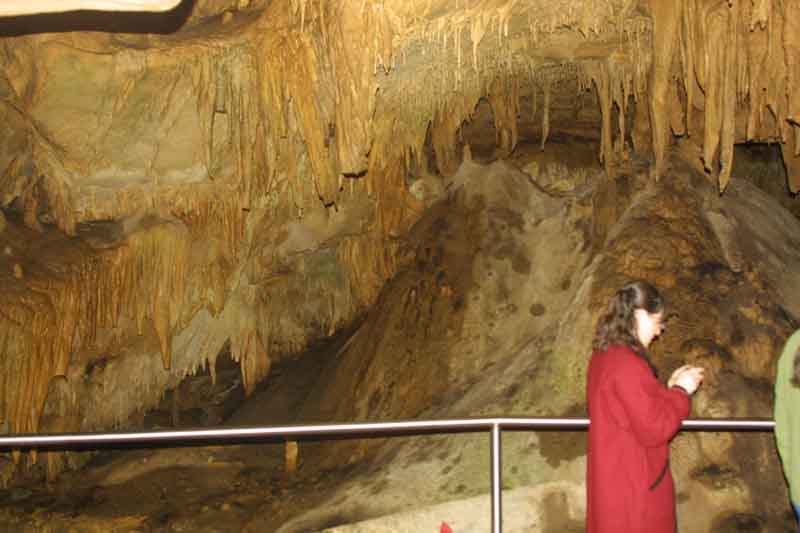
|
Extensive fields of stalactites hang down from
the cave ceilings, and pass the textured cave walls. the path here winds
through some very impressive formations.
|

|
The paths curve through and around the formations,
almost giving the feel of being in a stone forest. Visitors appear
to be attempting to photograph every inch of the place.
|

|
The green color, in certain areas of this cave,
is not natural. This is from algae growth, which is only made possible by
the artificial light snow installed in the caves. This is a very big concern,
of the Park Service, and they are testing different kinds of lights, and
possible cleaning methods, to reverse the growth. This is only an issue in
the wet areas of the cave. The majority of the system, which is dry, does
not have this problem.
|
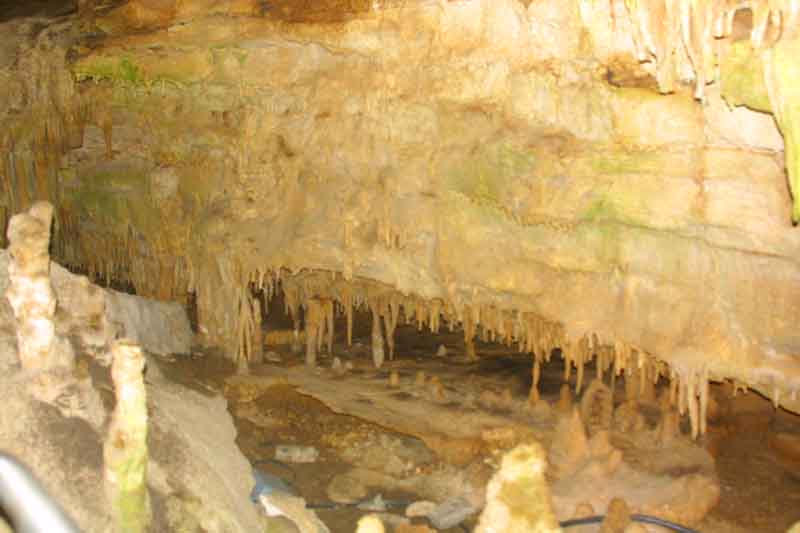
|
Cracks, and fissures, indicate the possibility
of other caves, branching out into the system. These will probably never
be explored, due to the impossibility of getting through the fissures, without
damaging the cave.
|

|
As abruptly as they began, the formations start
to end, towards the end of the section of wet cave, we begin to see flat
ceilings, and one last bit of flowstone.
|

|
The cave narrows, and the ceiling comes down,
towards the top of the cave. A ranger, and a park visitor look at the cave
crickets which populate the ceiling.
|
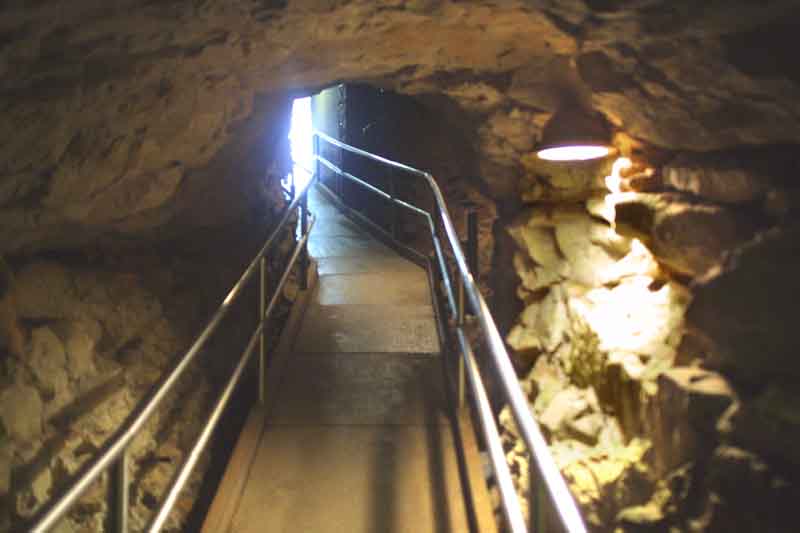
|
The door, to the outside, is up this path, and
through a short tunnel blasted into the rock. This was not a natural entrance.
|
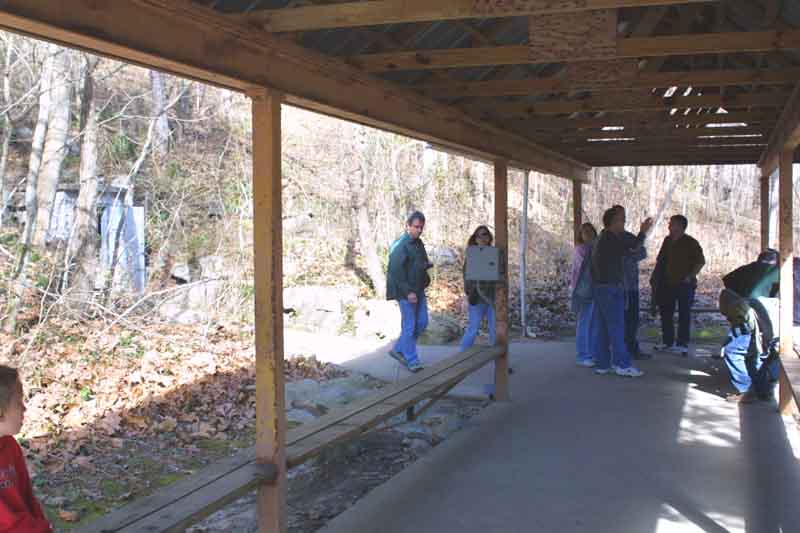
|
Outside of the cave, we wait in a sheltered
overhang for our buses to come, to take us back to the Visitor Center. The
steel door, leading to the cave, is to the left of the photo.
|